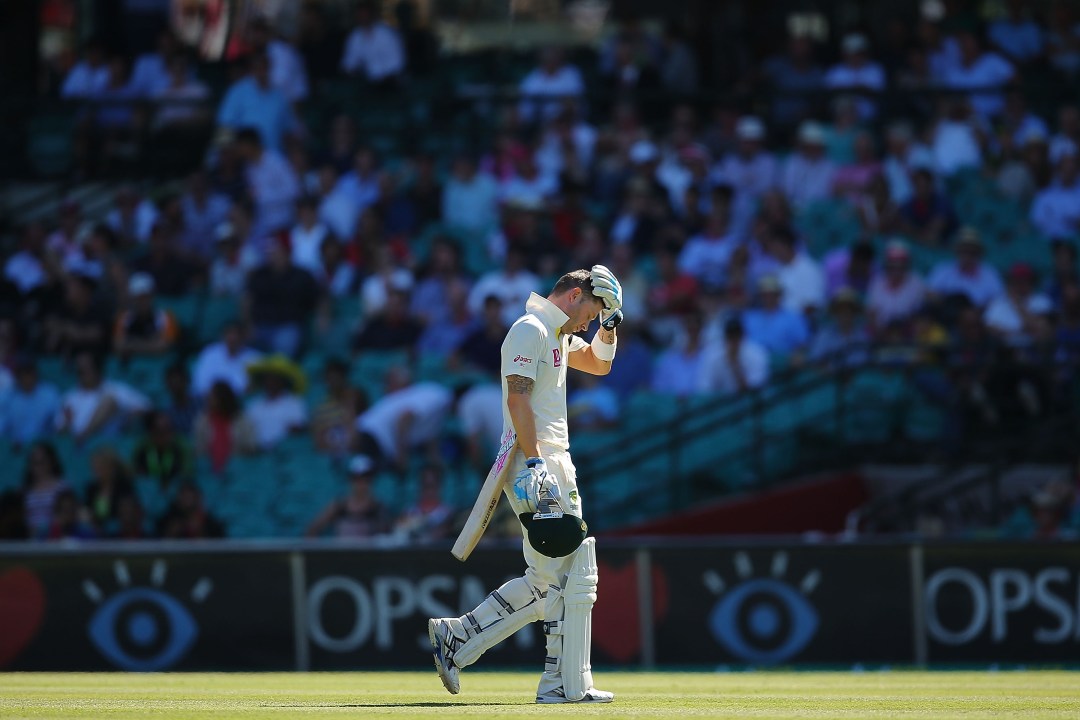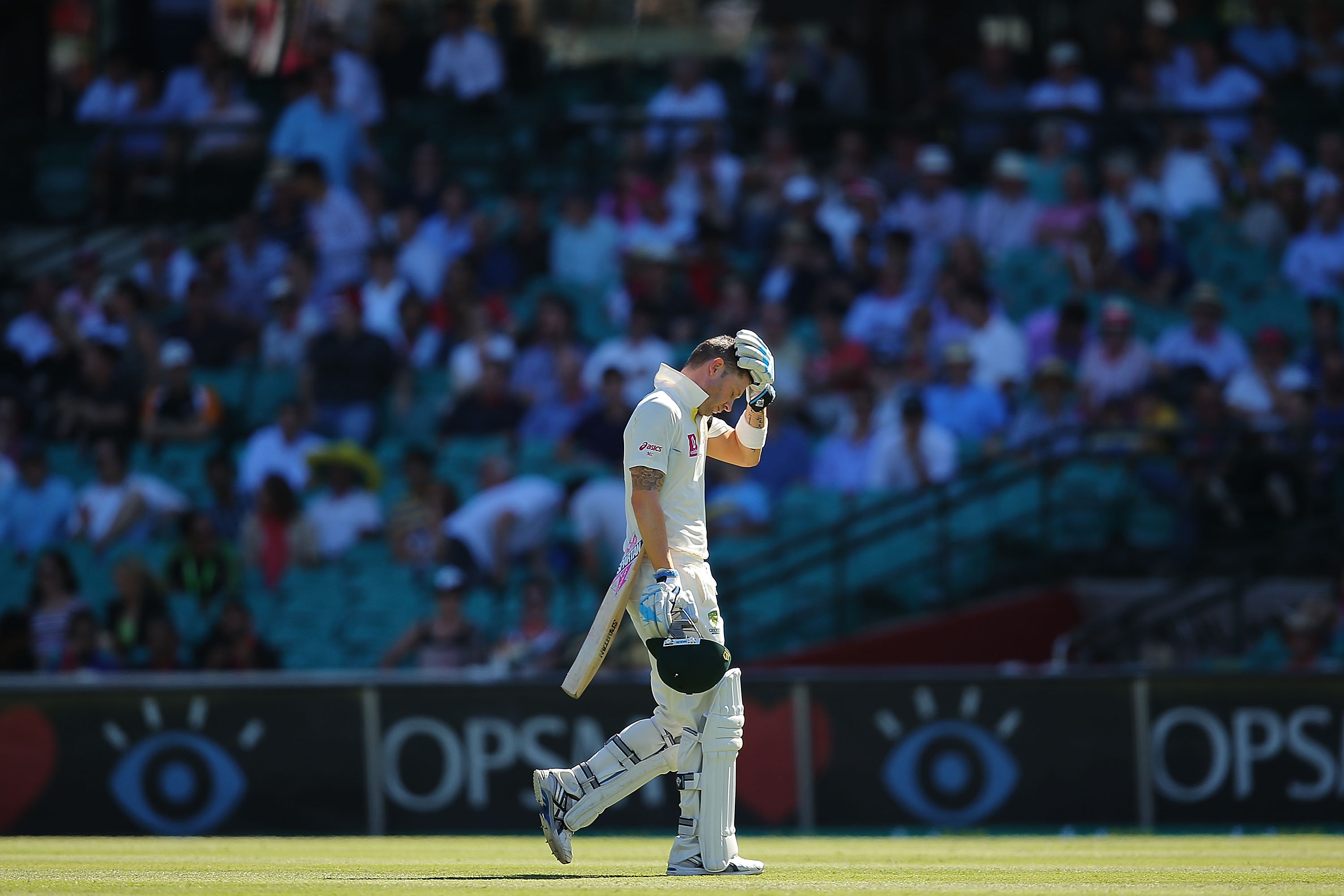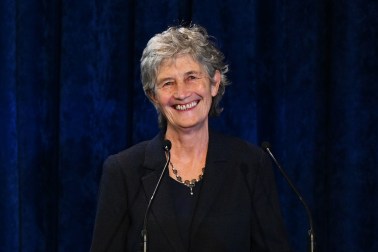Stuart Law. Darren Lehmann. Jamie Cox. Phil Jaques. Brad Hodge. Michael di Venuto. Chris Rogers. Martin Love. Tom Moody. Nine men who count as some of the unluckiest cricketers ever produced by Australia. Each of them scored more than 50 first-class centuries; none of them won more than a handful of test caps. They had the misfortune to be the contemporaries of the Waugh brothers, Ricky Ponting, Matthew Hayden, Justin Langer, Damien Martyn, Mike Hussey and so on. Such was Australia’s strength in depth in what Gideon Haigh neatly termed the Green and Golden Age that none of these nine ever commanded a regular place in the test team.
All of them would stroll into the current Australian side.
Of course they would. The Australians being clobbered in India right now may be the weakest XI ever privileged to sport the famous old baggy green cap. Suddenly the Australian Supremacy seems a long time ago. It rests with Ninevah and Tyre and all the other glories of a long-gone era.
Statistics can deceive, of course, but there comes a point at which the case they make becomes unanswerable. And this is the weakest Australian batting order I’ve ever seen and one which may well be the worst of all-time. Michael Clarke, the sole shining exception in a team of startling mediocrity, has worked miracles since assuming the captaincy. But Australia’s batting order is Hercules and the five dwarves.
Since sympathy is not a quality often associated with Australian cricket, it is hard not to enjoy this Australian discomfort. Schadenfreude may not be a noble sentiment but it’s mightily enjoyable. Even worse, from an Australian perspective, there is a risk this relish will curdle into something close to pity. That’s a humiliation too far.
Of course, the wheel will turn. It is hard to believe the Australians will be quite as hapless in England as they are in India. Ten back-to-back Ashes tests offer our antipodean friends a shot at redemption.
Which makes it all the more necessary to enjoy their woes now while we still have the chance to do so.
Nevertheless, a top order of Ed Cowan, David Warner, Phil Hughes and Shane Watson must be the weakest batting line-up ever assembled down under. Every one of the nine players mentioned above would be better than any of the quartet currently tasked with leading the Australian cause. Indeed, it’s hard not to think that Australia’s second XI from ten years ago would trounce their present first XI.
Averages are not the only fruit. The rate at which batsmen compile big scores matters too. Generally speaking, you’d wish each member of the top order to get to 50 once every three innings or so and make a century at least once every nine innings. So how do these Aussies masure up against that standard?
Rather poorly. Ed Cowan is a nice chap. Intelligent. Funny. Reads books. Has a test batting average of 31.5 and a solitary century in 25 attempts. David Warner is a 20/20 biffer and flat-track bully. But he can’t play spin and I fancy he won’t be able to play Jimmy Anderson either. He has three centuries from 30 innings and an average of 42. He’s a pauper’s idea of Virender Sehwag. Phil Hughes has talent, on that we all agree. But he’s also lost at test level as three centuries from 41 innings and an average of 33.25 suggest. And as for Shane Watson, well if he’s a test match number 4 then god help Australia. Two centuries from 72 innings and an average of 36.4 demonstrate that he’s a third violin, not a soloist.
Count that up and you reach a combined total of nine centuries from 168 innings. That’s one hundred every 18 innings. Or, in a five test series, about 2.5 centuries. Total. By way of contrast: Alastair Cook has made 23 test centuries from 154 innings.
So, sure, this may change. Perhaps the Australian batsmen will enjoy themselves against England. It’s not impossible that one or more of them will find some form. But the evidence of their own careers suggests we should not expect them to outperform their English rivals. Indeed, Clarke is the only member of the Australian top 7 who would be selected for a combined England-Australian XI.
As for the bowling? Well, Australia got the better of the Pattinson brothers and Peter Siddle is a good, big-hearted trier. The Mitchells – Starc and Johnson – also have something to offer (at least in English or Australian conditions). But Australia’s spin-bowling cupboard is bare (though one wonders what Steve O’Keefe has to do to be selected) and, again, any Anglo-Australian selection would be heavily loaded in favour of the men in the navy blue caps.
All this is oddly disconcerting. Not since the dark days of 1985 have the Australians looked so weak. That side was weakened by defections to a rebel tour to South Africa that deprived Allan Border’s side of, most notably, Terry Alderman. Similarly, the weak Packer-era Australians and the 1912 selection were crippled by political-squabbling that gave a false sense of Australian weakness. (Then again, the 1989 side were described as the worst ever and we know what happened next…)
There are no such excuses this time. Of course any side would find it difficult to replace the great men who dominated world cricket for so many years. On this tour of India, Mike Hussey’s absence has been especially keenly felt. In his place, Australia have selected bits-and-pieces players even though we’ve a century of evidence suggesting such cricketers rarely thrive in the test match arena. Picking three or four of them at one time is an invitation to catastrophe.
Nevertheless, you do wonder quite how it came to this and how Australia managed to, well, stuff it up so completely. Perhaps it is simply a coincidence. Perhaps it is just a cyclical turn. Yet one wonders if Cricket Australia have their priorities right. The attention given to the “Big Bash” 20/20 competition has further marginalised the dear old Sheffield Shield and one has the distant impression Cricket Australia knows the price of everything but the value of very little. Perhaps there was a measure of complacency too, an assumption that the talent tap would always be on and never run dry. If so, that complacency should have ended by now.
Australian journalists love to slate visiting English teams before they’ve even arrived. The boot, happily, is on the other foot this time. This mob – at least the lot presently selected – are the worst team in Australian cricket history. They can, surely, only be better come the Ashes but, really, even a substantial improvement should not be enough. At the risk of tempting Dame Fortune, a brace of English spankings should follow. After which, with the memory of the Australian Supremacy consigned to the history books, we can begin to feel sorry for the Australians. But not until then. The books of woe and catastrophe have not been balanced yet. Not yet, not at all.








Comments